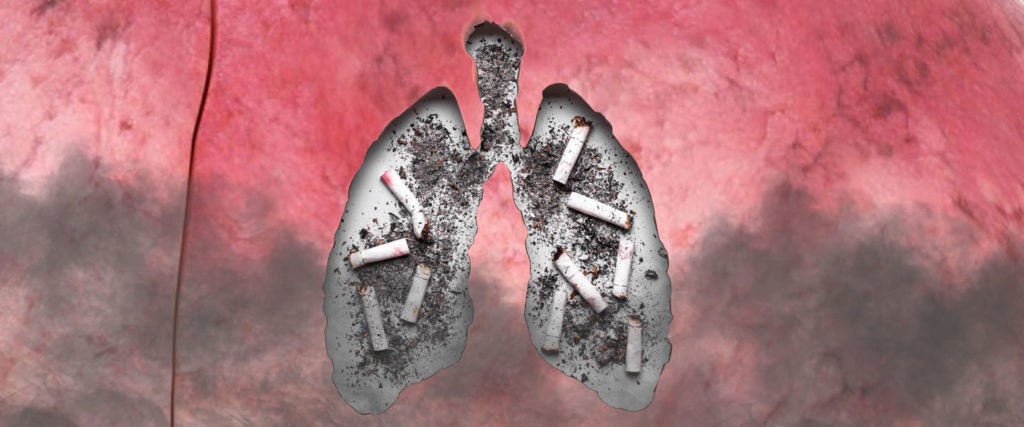Let’s say you burnt off all the skin on your arm. You’re not exactly going to get all that skin back, but you’re not just going to have a festering barbeque for a limb forever, either. To a certain extent, smoking cigs is just repeatedly burning the lining of your lungs. Like the rest of the body, your lungs have some recuperative power. As with a burn to the skin, the damage cigarettes do to your lungs can heal over. The extent of that healing, though, will depend on the extent of the damage. If a burn on the skin can leave a scar, cigarettes can also have a lasting effect on the lungs even after the healing is over.
There are lots of studies and headlines about smokers’ lungs magically “healing” after they quit. These stories aren’t false, but nor are they the whole truth. According to LiveScience, after a few weeks of no longer smoking, smokers’ lungs can return to a relative state of normal in terms of inflammation. Immediately after smoking a cigarette, the mucus in our lungs becomes thicker due to chemical irritants in cigarettes, and while our lungs are usually able to clear mucus utilizing cilia — the tiny hairs that coat our respiratory system — this mucus is too thick to be properly moved through the body and instead inflames the lungs, in addition to the irritation caused by the cigarettes themselves. This is responsible for many of the side effects of smoking, like shortness of breath and coughing. Depending on how heavily a person smokes, these symptoms can subside within days of quitting.
Without a thick coating of basically toxic sludge in our lungs, they can return to their somewhat regular functions. But there are some serious caveats: The production of scar tissue is an essential part of healing for almost any type of bodily damage. The damage caused to the lungs by cigarettes will ultimately be healed in a similar way, with the production of new tissue. But the longer and more heavily a person smokes, the more this tissue will grow since the lungs will attempt to heal themselves even while the smoking continues. However, because of the constant re-irritation to the lungs, this tissue simply becomes thicker. Imagine you burned off all the skin on your arm a second time, and then picked at all the scabs as they healed. Because you never let it heal properly, all that tissue would just accumulate.
Accumulated tissue is more of a problem in the lungs than it is on our skin, though. Tissue impacts the elasticity of our lungs, which is essential to our ability to properly inhale and exhale. Emphysema, for example, is the result of our lungs losing elasticity almost entirely. So, even if all this tissue is technically “healed,” it can still have a lasting impact on our functioning.
Basically, our lungs can “magically regenerate” to the extent that any tissue on our body can. While we can’t regrow limbs like a starfish, we have recuperative properties that allow us to not live with open wounds all the time. If you quit early enough, those wounds can heal. Of course, you’ll be left with scars and years of exposure to cancer-causing chemicals. But better to quit with some scar tissue than to quit with lungs that are basically as powerful as a plastic bag.

